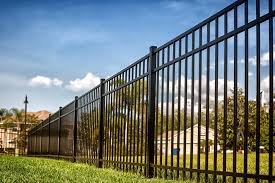
Beyond the Barrier: The Multifaceted Role of Fences
Beyond their sensible application, fences carry powerful symbolic relevance in individual communities, representing methods of acquisition, identity, and social boundaries. As physical manifestations of restrictions, fences form our perceptions of place and impact our interaction together with the constructed surroundings. Let’s delve into the symbolic need for fences (ploty) and understand why they may be more than just structures—they are symbols of human tradition and modern society.
1. Ownership and Territory:
Fences symbolize management and territorial limitations, marking where a single property stops and another will begin. By determining limitations, fences set up a feeling of ownership and control over territory, strengthening person or group personal identity. In gardening adjustments, fences delineate fields and pastures, signifying management of land and assets. In the same manner, in urban situations, fences demarcate personal home from general public room, asserting acquisition and exclusivity.
2. Societal Section and Exclusion:
fences (ploty) can also stand for social divisions and exclusions in modern society. High wall space and limitations may indicate divorce and inequality, making actual limitations that break down residential areas depending on socio-economic standing or any other elements. Conversely, fences with wide open gates and low wall space represent inclusivity and relationship, appealing connections and cultivating feelings of neighborhood. The design and style and presence of fences reveal root social dynamics and strength structures.
3. Cultural Identification:
In lots of civilizations, fences hold deeply ethnic relevance and so are imbued with significance that mirrors ethnic ideals and customs. As an example, in a few ethnicities, elaborate fences are icons of standing and prestige, featuring riches and success. In contrast, in other cultures, easy and useful fences can be respected with regard to their practicality and utilitarianism. Comprehending the social context of fences helps us value their symbolic value in numerous communities.
4. Mental Restrictions:
Fences can also symbolize mental boundaries that determine individual place and autonomy. By producing actual boundaries, fences offer those that have feelings of security and level of privacy, permitting them to create boundaries and manage entry to their individual area. This sensation of boundary manage is important for sustaining psychological well-being and social partnerships, mainly because it will allow visitors to assert their autonomy and safeguard their personalized boundaries.
5. Enviromentally friendly Impact:
The proliferation of fences has environmental consequences, specifically in normal countryside and wildlife habitats. Extensive fencing can fragment habitats and interrupt wild animals corridors, influencing biodiversity and ecosystem health. Even so, eco-helpful fencing choices, including animals-warm and friendly designs and permeable barriers, supply alternatives that balance human demands with enviromentally friendly efficiency. By minimizing their enviromentally friendly footprint, fences can play a role in the preservation of organic landscapes and wild animals habitats.
To sum it up, fences are more than simply actual physical buildings they are signs that symbolize intricate sociable, social, and psychological dynamics. As guardians of restrictions, fences condition human interaction and panoramas, showing and strengthening societal values and norms. Admiring the symbolic incredible importance of fences enriches our comprehension of the constructed surroundings and our relationship with all the land.